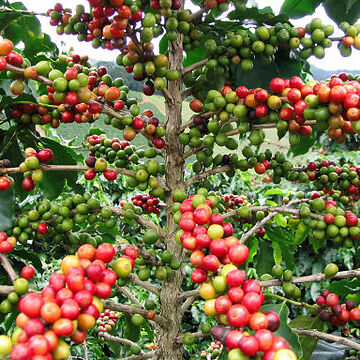Shrubs or small trees, unarmed, often resinous on young growth; lateral branches usually spreading horizontally. Raphides absent. Leaves opposite or rarely in whorls of 3, distichous at least on lateral branches, often with foveolate and/or pilosulous domatia; stipules persistent, shortly united around stem, generally triangular, sometimes aristate. Inflorescences axillary, in each axil with 1 to several capitate to fasciculate, 1-to several-flowered cymes, these sessile to shortly pedunculate, bracteate; bracts often fused in cupulate pairs (i.e., forming a calyculus). Flowers sessile or shortly pedicellate, bisexual, monomorphic. Calyx limb obsolete or occasionally truncate or 4-6-toothed. Corolla white or pink, salverform or funnelform, inside glabrous or villous in throat; lobes 4-9, convolute in bud. Stamens 4-8, inserted in corolla throat, exserted; filaments absent or short; anthers dorsifixed near base. Ovary 2-celled, ovules 1 in each cell, attached at middle of septum; stigma 2-lobed, exserted. Fruit red, yellow, orange, blue, or black, drupaceous, globose to ellipsoid, fleshy or infrequently dry, with calyx limb when developed persistent; pyrenes 2, each 1-celled, with 1 seed, plano-convex, leathery or papery, on ventral (i.e., adaxial) face with longitudinal groove; seeds medium-sized to large, longitudinally grooved on ventral face; radicle terete, basiscopic.
Shrubs, rarely pubescent. Leaves occasionally ternate, usually petiolate, the stipules free, acuminate, persistent. Inflorescences with flowers conglomerate in the axils, the bracteoles connate into a calyxlike cup. Flowers sessile or pedi-cellate, the hypanthium variously shaped; calycine cup reduced, truncate, dentate or lobulate, often bearing small glands within; corolla salverform or funnelform, the lobes 4-8, contorted; stamens 4-8, sessile or on short filaments inserted in the throat, the anthers linear, basally dorsifixed, exserted or included, often twist-ed; ovarian disc swollen, the style slender or thick, the stigmas 2, narrow, the ovary 2-celled, the ovules solitary, subpeltately affixed to the middle of the sep-tum. Fruits baccate, dry or fleshy, the 2 carpels often coriaceous, convex but plane and sulcate on the inner face; seeds 2, convex, the testa membranous with a deep groove on the ventral side.
Flowers hermaphrodite, (4)5–8(12)-merous, borne with leaves or precociously (or terminal on spurs, in subgen. Baracoffea, not in the Flora Zambesiaca area); inflorescence units 1 or 2–4 per leaf axil; inflorescence stalks (including pedicel) individual or grouped on a common peduncle, glabrous or pubescent (but this character is often obscured by sticky exudate); cupular bracts/bracteoles (cupules*) in a series of 1–3(4), each with 2 stipule-derived (stipular lobes) and 2 leaf-derived (foliar lobes) (TAB. 92/B6) and with colleters within; stipular lobes usually stipule-like; foliar lobes rudimentary, linear or subfoliaceous; occasionally a bracteolar cupule present at base of pedicel, variously divided sometimes ± to the base; scale-like bractlets borne along true pedicel up to base of calyx tube or absent, often with colleters partly protruding.
Seed oblong-ellipsoid, grooved on inner face; testa thin with compressed cellular sculpturing that superficially appears striated, shiny (referred to as “silver-skin” by coffee growers); endosperm pale in colour, horny, asymmetrically folded from the groove; embryo erect, somewhat curved.
Corolla white or occasionally pink, glabrous; tube cylindrical and widened at throat or somewhat funnel-shaped, shorter than, subequal to or, occasionally a little longer than the lobes; lobes contorted in to the left bud, spreading.
Leaves opposite, petiolate, glabrous; domatia usually present, the cavity completely or partially defined, glabrous or pubescent; stipules very shortly united above the axils, obtuse or aristate, usually with colleters within.
Calyx tube campanulate to turbinate; limb usually ± obsolete and shorter than the disk, occasionally equalling or rarely exceeding the disk, truncate to dentate, usually beset with colleters.
Stamens attached at mouth of corolla tube, exserted, semi-erect to divergent; filaments ± one-third the length of the anther; anthers linear, attached dorsally up to one-third from the base.
Ovary 2-locular; ovules solitary, subpeltately attached to the middle of the septum; style slender, glabrous, exceeding the corolla tube; stigma exserted with 2 usually divergent arms*.
Fruit a ± ellipsoidal drupe, usually containing (1)2 ± coriaceous, 1-seeded pyrenes.
Shrubs or small trees.
Disk annular.


